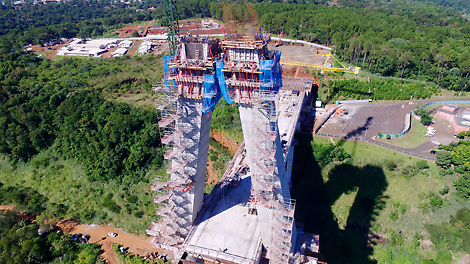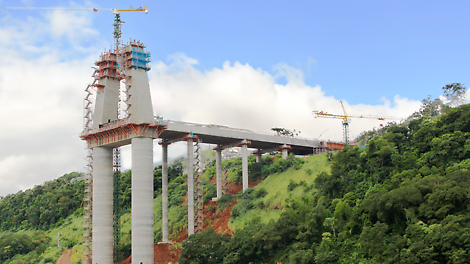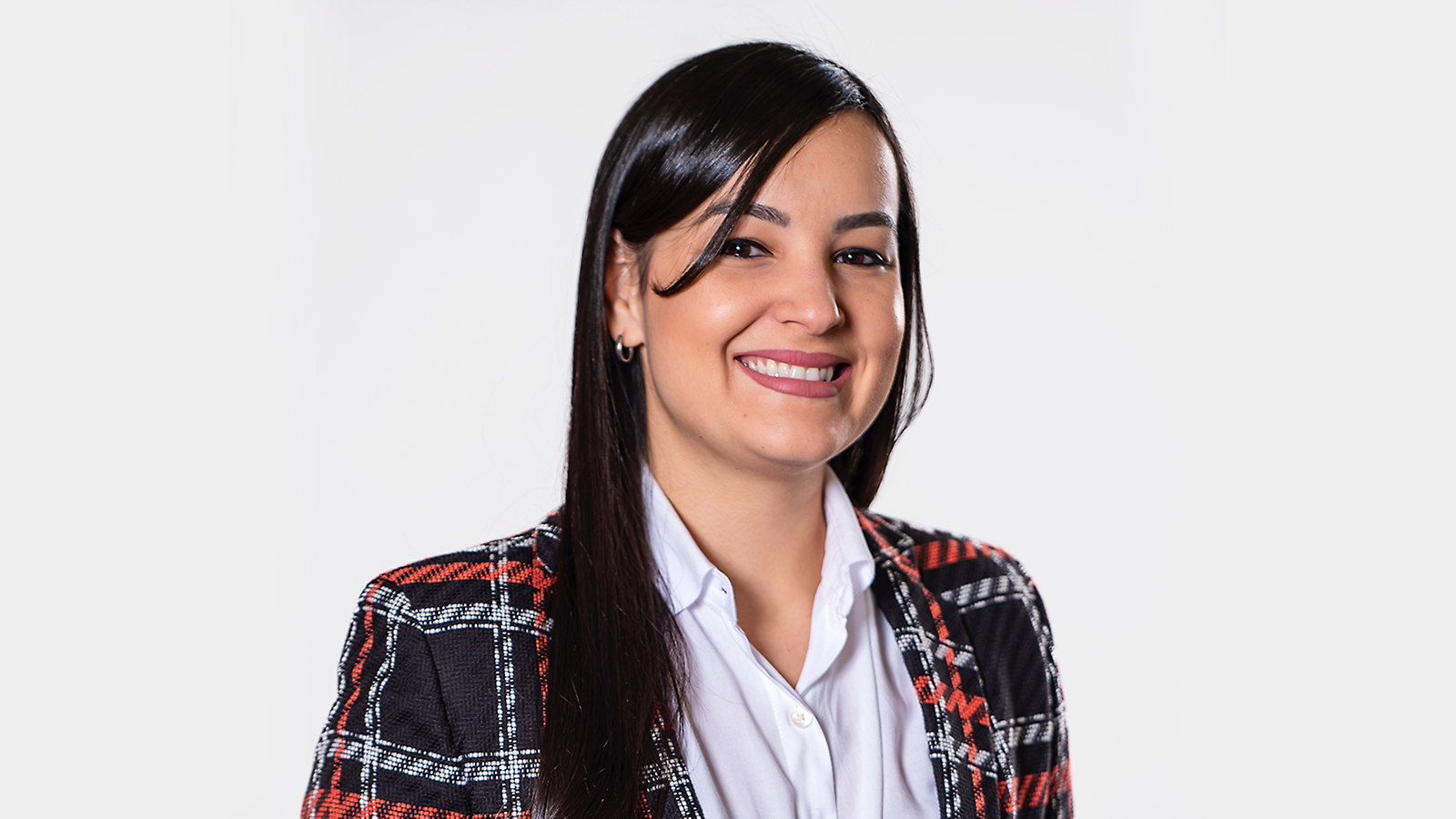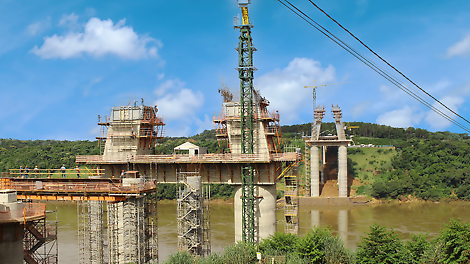
Anna's journey with us began in the megacity of Sao Paulo in 2011. In the Engineering department, she gained valuable experience as an engineer and contributes her strengths to PERI: developing customised solutions for our clients' needs together with her team and keeping a cool head in difficult situations.
“Brazil is a huge country with incredible potential – especially in the infrastructure sector. A complex bridge construction project in 2020 helped us to gain a stronger foothold in this segment,” says Anna.

Helping to shape the longest cable-stayed bridge in South America
With a total length of 760 metres, the Ponte da Integração is not only an imposing structure, but also the longest cable-stayed bridge in all of South America. And Anna played a key role in coordinating the project. “It was important to present our client, the Consorcio Ponte FOZ group, with efficient solutions, for example for key sections like the two pylons or the ends of the bridge,” recalls Anna.
But just before the construction project began, she and her team had to overcome another hurdle: the start of the project fell at the same time as the start of the corona pandemic. “In order to remain flexible and agile in our way of working, we have for example switched from whiteboards to digital Kanban boards. We also networked even more digitally with everyone involved so that we could continue to make quick decisions despite the restrictions,” says our Project Manager looking back. In this way, Anna and her team made the project a success in just three steps.


Step 1: Efficient solution for the bridge deck
The first task was to develop a solution for the start and end sections of the bridge. The aim for the realisation was the repeated use of our systems – without any dismantling for the bridge deck. To achieve this, our project team designed a combination of VARIO GT 24 girder wall formwork and MULTIPROP floor props, which were mounted on a mobile carriage. “Using this method, our client was able to pour the concrete piece by piece without a big investment of time and labour,” explains Anna.
Step 2: Stable and safe systems at a height of 60 metres
Another challenge involved the 60-metre-high locking beam between the two pillars. One of the requirements of the project was to support it with conventional shoring. “Normally, heavy-duty trusses are used for such purposes. However, we were able to dispense with them and fulfil our clients' wish with our PERI UP scaffolding construction kit,” says Anna. As the bridge was located in a windy region, safety and stability were also important. “With the help of our calculations, our client got a stable system and was able to transfer the loads accordingly,” says our Head of Engineering.


Step 3: Special solution for concreting inclined structures
The last major mission awaited in the upper area of the two pillars. As they do not run in a constant straight line, but are in the shape of an inverted Y, our client needed a suitable solution for this. In addition, our products had to be compatible with those of our client. “Our rail-guided RCS climbing system was the right option for this. We developed a special solution so that it could also climb inclined,” explains Anna. For this, she got support from Mirko Jordan, Head of Engineering at PERI Chile. He is an expert in climbing systems and supported Anna and her team in adapting the system. “With our expertise and technology, we have shown that we can not only develop and implement complex customised solutions, but also integrate them into standard systems and processes,” says Anna proudly.
Always in constant dialogue with our client and her team, she navigated the project process and was able to inspire Consorcio Ponte FOZ with our formwork and scaffolding solutions step by step. After a year of intensive work, the effort has paid off. “We have only received positive feedback – mainly because we worked in a structured and client-orientated way and reacted flexibly to difficult situations. The fact that we were subsequently awarded further major infrastructure projects here in Brazil was the greatest confirmation of our successful work,” summarises Anna.
We are on site for you worldwide
Our support knows no borders - no matter where you are in the world. Simply select the website for your country and discover detailed information about our products, projects and contact details for our local contacts. We are always happy to assist you and look forward to helping you too.